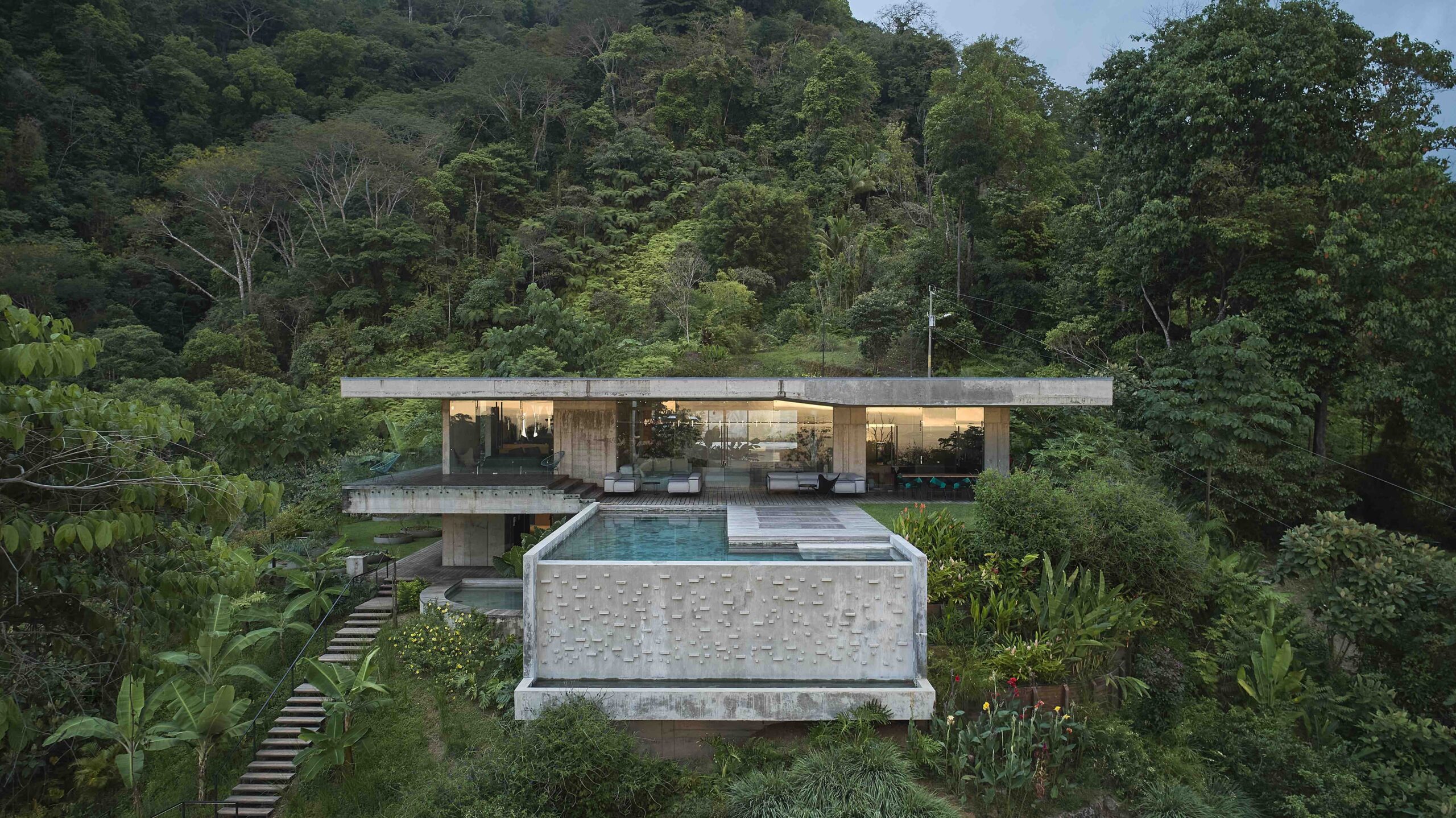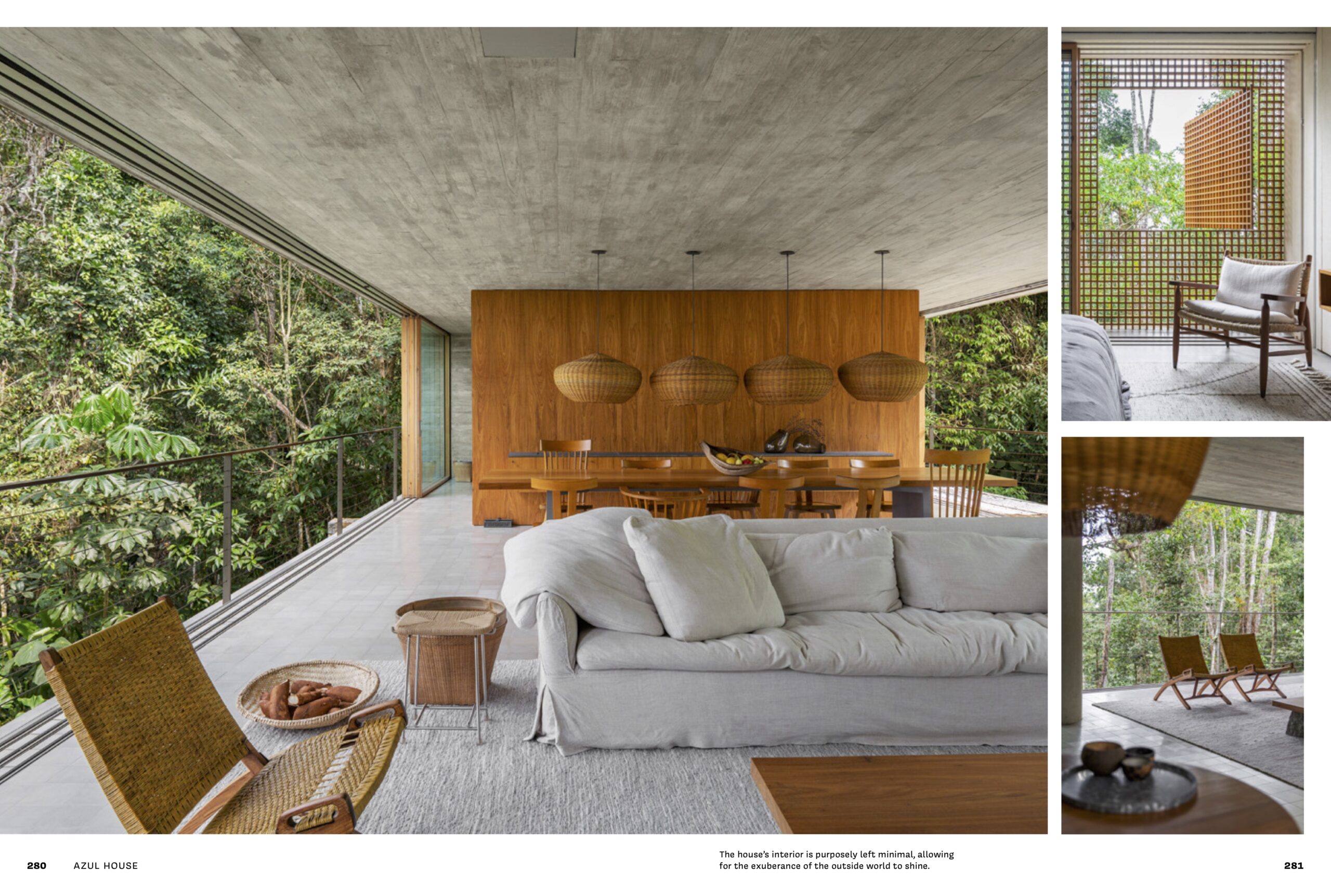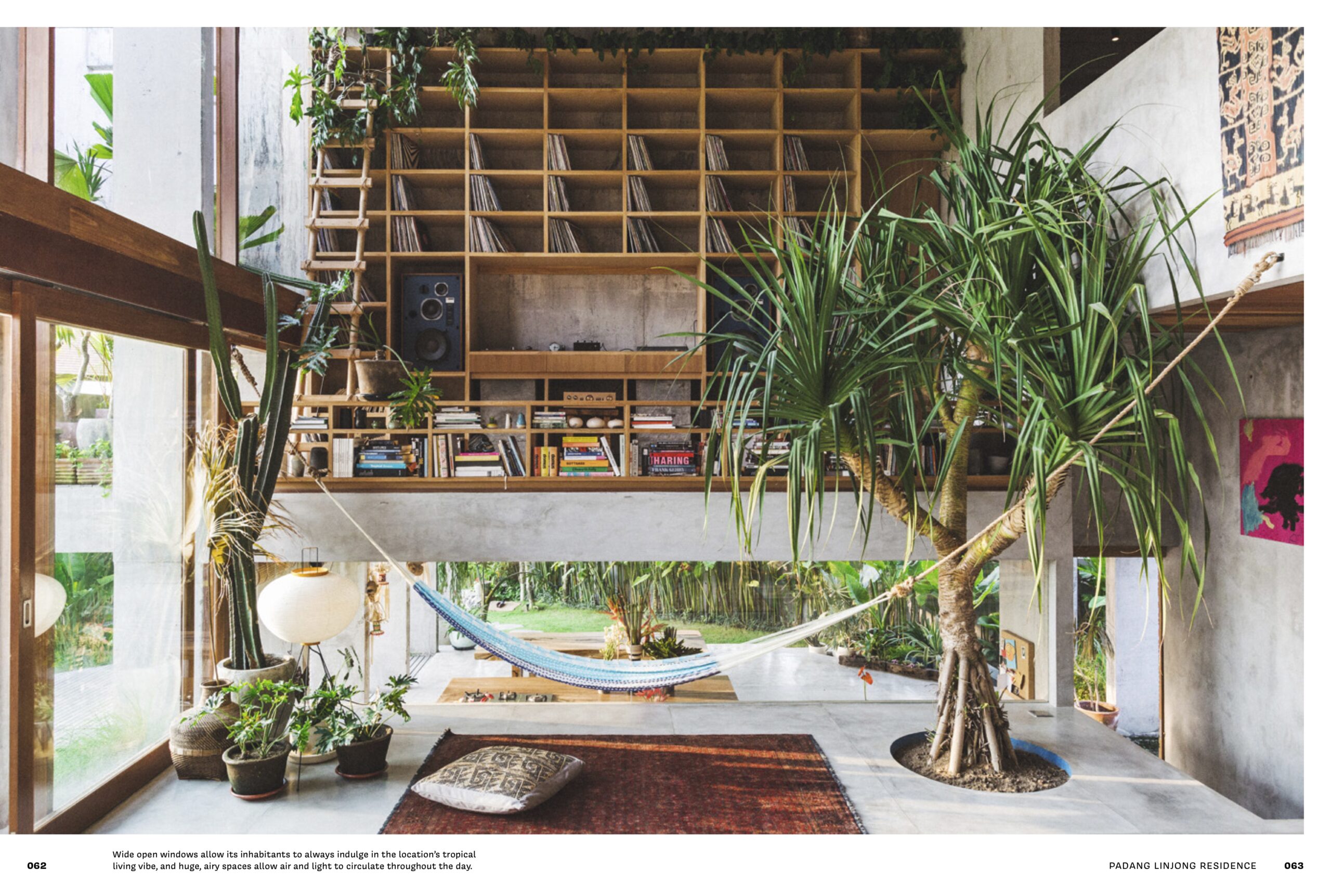The strong gray concrete walls that characterize modern architecture join the lush tropical vegetation, giving rise to visionary and futuristic buildings, nurturing the connection between man and nature, between progress and landscape, between the built environment and the natural world, creating an interconnected organism. Tropical countries such as Brazil and Mexico have developed a vision, based on Bauhaus aesthetics and Modernist style, that pushes beyond the contemporary, resulting in architecture that is favorable, appropriate, and timeless. The project begins by reflecting on the landscape, to which are then added well-thought-out man-made elements that establish an endless dialogue with the surrounding flora, from which arises a steadfast stability that to our eyes appears as one. The aesthetic that is becoming increasingly popular in South America explores creativity in all its forms, carefully selecting the design and materials: the complete result is harmonious, and man establishes a true relationship with the environment, feeling like an integral part of it. Concrete Jungle is the new book published by Gestalten that takes readers on a journey to discover the best architecture that embraces the “Tropical Modernist” style and the designers who pioneered this aesthetic.

In Concrete Jungle we embark on a journey through the works of architects influenced by the Tropical Modernist style, from Luis Barragán to Paulo Mendes da Rocha, to Marcio Kogan.
The book explores multiple buildings that connect the artificial aspect with nature, showing the exterior and interior of these incredible houses and explaining how the encounter between man and the environment happen. King House, designed by Paulo Mendes da Rocha, is located in Sao Paulo, Brazil: the house rests on eight columns in such a way that it does not interfere with the surrounding landscape, overshadowing the human aspect. The land where the building is located is surrounded by vegetation, making outward-facing spaces that can participate in conversation with the immense greenery. The Zoncuantla Apartments building, on the other hand, is a design by Rafael Pardo set in the Mexican tropical forest: it has a polygonal shape suited to emphasize the view of the landscape, promoting contemplation of the environment and emphasizing the importance of the terraced structure. The vertical wooden form looks like a staircase to the sky, which, thanks to the choice of colors and materials, blends in with nature, becoming an integral part of it. Glass plays a central role in each of these projects: through the large windows one has the opportunity to enjoy the beauty of the environment in which one lives, reflecting on the importance and vastness of the immaculate world.

Art Villa is another example of the Tropical Modernist style: created as a resort in the Costa Rican jungle overlooking the Pacific Ocean, it consists of three unique villas and a multifunctional pavilion. The structure, designed by Formafatal Studio, is made of reinforced concrete intentionally left rough to create an unusual environment, coarse and luxurious at the same time, directly inspired by its surroundings. Each of the spaces explored by Concrete Jungle is inspired by the laws of the jungle, striking a rare balance between the innate elegance of nature and the artificial elegance of the modern luxury. The structures seem to transcend the ordinary, in a world where creativity comes to life as human breath mingles with the sound of leaves moving to the rhythm of the wind.

Concrete Jungle highlights the strength of man in relation to the overpowering energy of nature: contrary to our habit, cement is not perceived as a danger, but as an ally of large spaces, huge voids, where the raw material expresses itself in all its beauty, giving life to monumental structures that house within them all the intimacy of the human being. The latter has the opportunity not only to approach the landscape, but to build a relationship that turns into a long and strong dialogue. The environments designed for each of the Houses described in the book present open spaces that permit to turn the sight constantly toward the outer, in order to observe the latter and, at the same time, to celebrate the rich, wild and unspoiled vegetation. The residences in comparison with the environment look like small concrete boxes that gently sway with the movement of the trees, allowing those who live in them to breathe an air of purity and authentic integration.
For further information gestalten.com.










